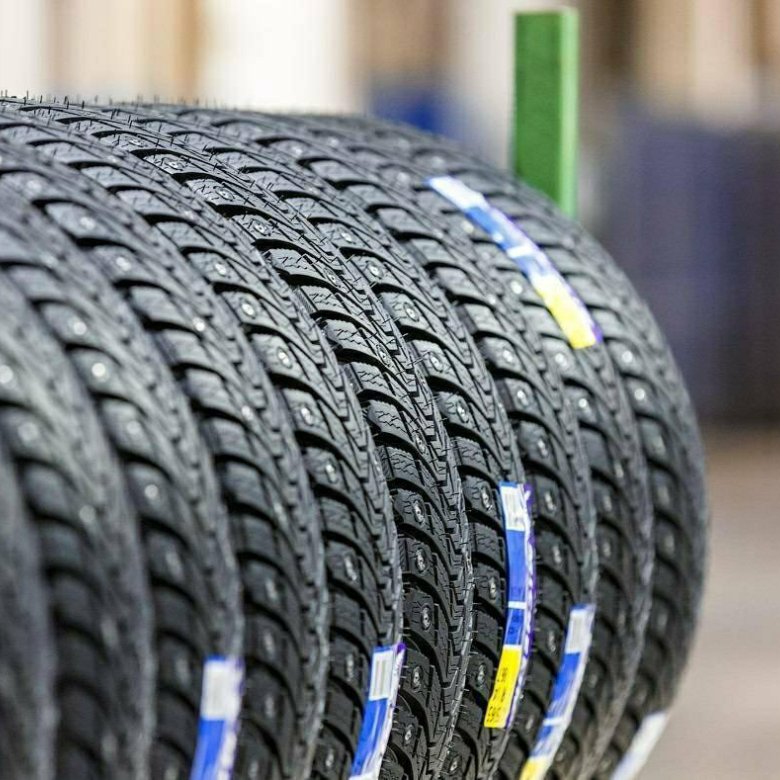Do I need to buy winter tires or can I just get snow chains?
What the heck is siping?
When do I have to have studded tires and when will studless do?
If you’re wondering how to pick the right tires for winter, or whether you need them at all, here are answers to the eight most common questions about winter tires.
(A lot of people still call tires used in the cold months “snow tires,” but it’s more accurate to call them “winter tires.” For purposes of this article, we use both terms to mean tires designed for winter driving.)
Winter tires are important for safe driving if you live somewhere that gets snow, ice, sleet or freezing rain and temperatures of 40 degrees or colder. They’re also the right option if you routinely make trips through snow zones or the mountains during the cold months.
Learn about the difference between all-season tires and snow/winter tires here.
Some all-season tires have an M+S rating. This stands for mud and snow. These tires have a more aggressive tread design to deliver better traction in a variety of conditions using larger tread blocks and wider gaps between them. The purpose of these tires is to achieve optimal tire life along with good performance in most weather conditions.
But it doesn’t mean they’re adequate for winter driving. In slick conditions, they don’t deliver the traction, control and short stopping distance that you get from a snow tire.
If you want safer driving on packed snow or ice, look for tires made with the right compound and branded with the Mountain Snowflake. This means they’ve actually been tested and certified to perform in winter conditions.
 “I have all-season tires, so I don’t need snow tires. Right?”
“I have all-season tires, so I don’t need snow tires. Right?”Wrong. Don’t believe it? See this driving comparison between all-season and snow tires.
If you’re driving on snowy or icy roads, only winter tires will give you good stopping ability and secure handling. This is because they’re built very differently. How?
Different compound. Summer and all-season tires are made with a stiffer rubber compound. This helps the tire retain its shape when it’s rolling on hot pavement. Winter tires are made with hydrophilic (that’s “water-loving”) rubber which stays softer and more pliable in winter weather. This more flexible rubber is one reason you get more traction on snow and ice.
Another reason is tread design. Winter tires have a higher “void-to-lug” ratio, meaning there are larger grooves between the blocks of tread (the lugs). The tread blocks also have irregular, sharp edges.
When a tire with wide grooves and biting edges travels over packed snow, it cuts through and scoops some of the snow into the voids on the tire surface, allowing the tread to stay in closer contact with the road. Then the velocity of the tire ejects this snow from the grooves. This is how winter tires provide more aggressive traction than all-season tires.
Then the velocity of the tire ejects this snow from the grooves. This is how winter tires provide more aggressive traction than all-season tires.
Most snow tires are already siped, with small patterned slits on the lugs that create extra edges for better road grip. Additional safety siping can be done for a fee on new or used tires. If you’re regularly traveling on slick roads, the added traction from custom siping is a good way to improve starting, stopping and rolling traction.
Before you jump on that set of “lightly used” winter tires on Craigslist, do three quick checks. First, verify they’re the right size. You can look in your vehicle owner’s manual or right on your existing tires’ sidewall close to the rim for the series of numbers. (Here’s a primer on what they all mean.) If you’re not sure the tires you’re considering are the correct size, call a tire dealer and make sure.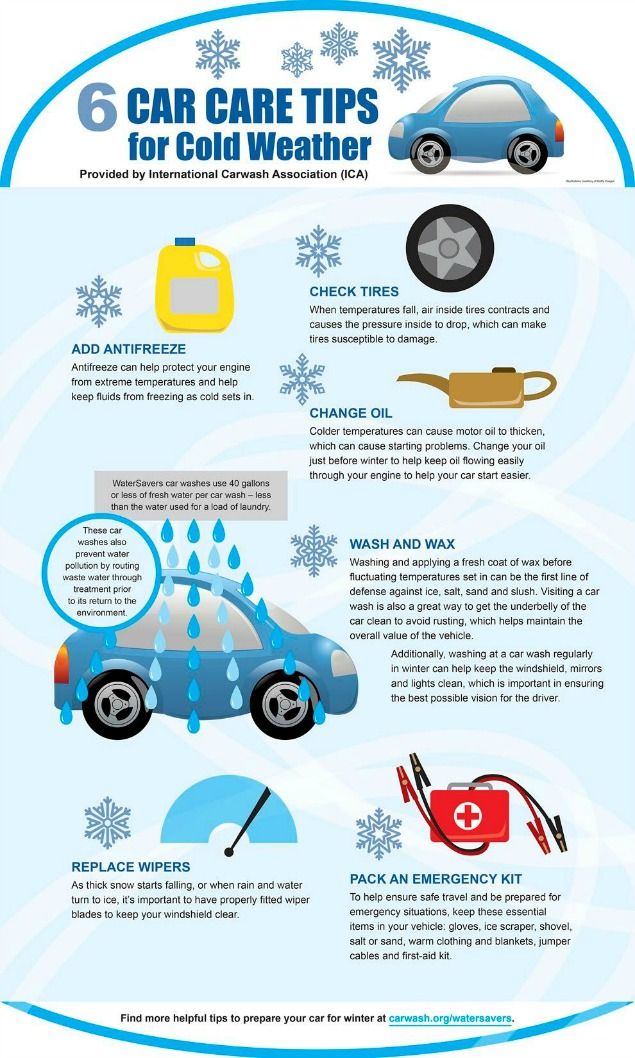
Second, measure the tread depth by using a tire tread depth gauge. You can pick one up at any auto parts store for under five bucks. Or have a tire store tech do it; it should be free. Take measurements in multiple places in the grooves on each tire.
A new tire typically has 11/32nds of an inch in tread depth. A rule of thumb is that if there are 6/32nds of an inch or less in tread remaining on a winter tire, it’s about to lose a good deal of snow performance. So think carefully about whether you’re going to get what you’re paying for.
Third, be sure there’s not a problem with uneven wear. Did your tread gauge measurements show any tread depth difference between the four tires? It’s really common for tires to wear differently over time. If the disparity between any two tires is more than 3/32nds of an inch, pass on those used tires. Driving with mismatched tires or putting the wrong size on your vehicle will NOT save you money in the long run. You’re risking big repair bills for your transmission.
It’s also a bad idea to put winter tires on only the front or back. This creates a big difference in traction between your axles. And this will mean less steering control, not more.
Tire chains can be important — and are sometimes required — for traction when you’re traveling in the mountains or on icy roads. But they’re not made for driving at highway speed or on bare pavement. You risk damaging your chains if you try this.
Don’t think of chains as a substitute for winter tires but as an option you need to have ready when you’re driving on snow.
Depending on the conditions and your state’s rules, traction controls in snowy areas will range from requiring only the minimum — like M+S tires on the drive axle — up to chains on all tires, including all-wheel and four-wheel drive vehicles. Here are California’s chain controls, for example.
The tire dealer will consider your driving habits, where you’re traveling and typical winter conditions in your area when recommending what you need.
Studless snow tires work well on slush and packed snow. They get traction through wide, deep grooves and lots of irregular surfaces with sharp edges. This allows the rubber to cut through snow and grip the road.
Studded tires provide the best traction you can get, even when you're encountering ice or packed snow. Studs are lightweight, small metal spikes that are staggered across the tread. They help break through packed snow and ice-covered roads to give you better traction. Note: Extra tread depth is needed to accommodate studs, so studded tire size options are limited. Also, the times of year when studded tires are allowed on the road vary by state. Here’s a guide to studded tire regulations.
It’s a question of time and money. Here’s a way to decide:
 (Les Schwab will swap out tires purchased at our stores at no charge if they’re mounted on separate wheels.)
(Les Schwab will swap out tires purchased at our stores at no charge if they’re mounted on separate wheels.)Also consider the extra wear and tear on your tires that comes with unmounting and remounting tires on only one set of wheels. Especially with low-profile tires, it’s not uncommon for an inexperienced tire tech to damage the inside edge of a tire near the beads, the places where the tire gets pried off and pushed back on.
If you’re leaning toward separate wheels for your winter tires, here are some tips on selecting the best wheel finishes for winter conditions.
Check out tests from the Tire Industry Association in this video to see what the difference winter tires can make.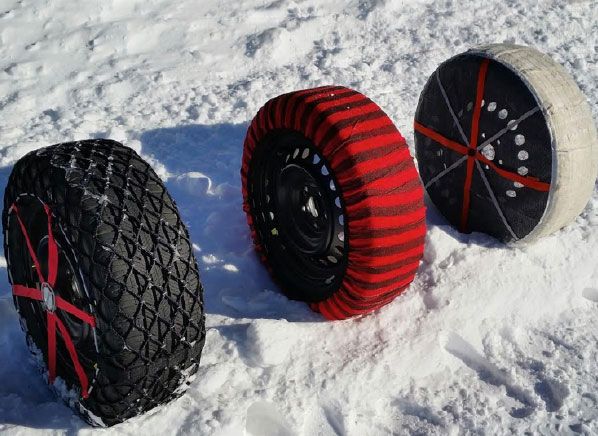
Some all-season tires are marketed as working equally well in summer and winter. That may be true in dry, mild climates where the seasons don’t vary much. But you’ll only get confident traction, braking and control on snow and ice with a winter tire. If you live in a place with winter weather, you’ll need tires marked with the Three-Peak Mountain Snowflake for safest handling. Because not all tires with a mountain snowflake have a winter compound, ask your tire dealer what you really need.
Want more tips on winter road safety? See 19 Winter Driving Resources You Can’t Do Without.
SHOP WINTER TIRES
Winter is officially here and that means it’s time for winter tires. It might seem like a great expense—if the tires on my car weren’t made for all seasons, why do they call them all season tires?—but trust us, they’re worth it.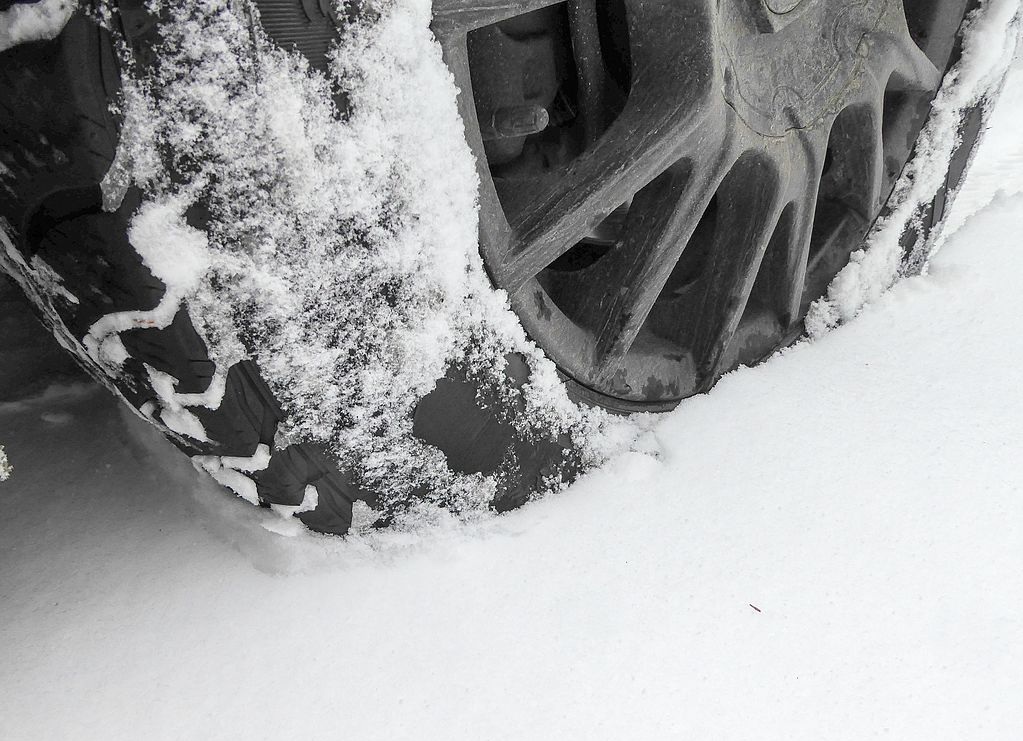 Really. Not sure which kind is best? Here’s what you need to know before buying some.
Really. Not sure which kind is best? Here’s what you need to know before buying some.
Booming sales of crossovers and Subarus of all kinds are strong evidence of how many drivers on the road these days that seem to think that all- or four-wheel drive will save them on snow and ice. They go buy an all-wheel drive SUV, slap on a set of all-season tires and go about their merry way.
And while all-wheel drive can make you feel invincible while you’re trundling down Main Street or around the parking lot, the truth of the matter is that an all-season tire will never beat out a winter tire in stopping and turning during slippery conditions. As Ron Margadonna, a senior technical marketing manager at Michelin with an extensive background in winter tires, puts it, “Your mobility is only as good as the tires you’re driving on.”
A tire’s basic job is to keep the car controlled and on the road. You can have any kind of tire you want (summer, all-season or winter), but their usefulness is broken down into three characteristics, explains Woody Rogers, Tire Rack’s director of tire product information.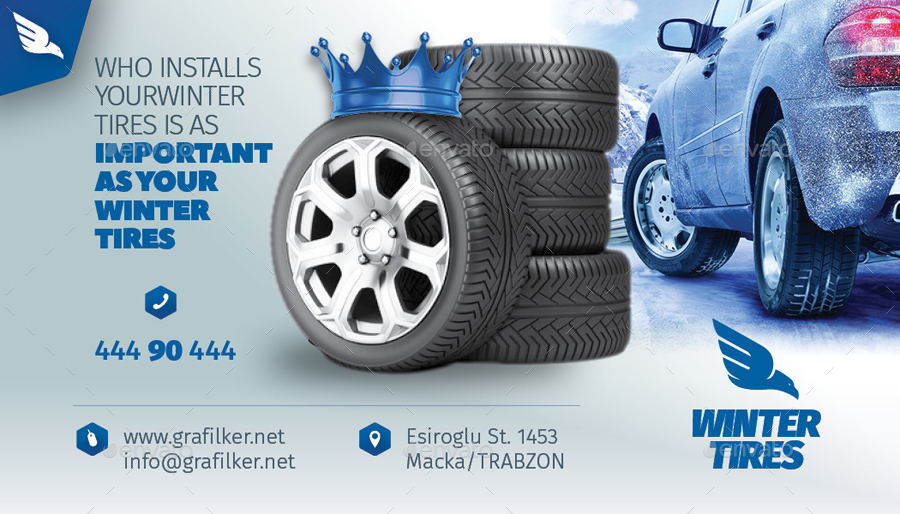 They are:
They are:
Winter tires will have an optimized tread pattern for low-traction situations. They also must have a sufficient tread depth to clear through slush or snow. (That’s a “volumetric driving event” in tire-speak.) Lastly, a winter tire’s compound (which you cannot see) is designed at a molecular level to stay soft, malleable and grippy as temperatures drop.
Rogers used a candy bar as an example. At room temperature, a candy bar is just right. Delicious, even. But if you put it in the freezer for a bit, it becomes rock-hard, brittle and breakable. The same happens to tire compounds that were not designed for cold temperatures: the traction and grippiness deceases dramatically.
You also might have heard that you only need two winter tires, usually a set for the car’s driving wheels. Margadonna immediately debunked that, asserting that you should always put winter tires at all four corners in order to maximize handling, even if you don’t have all- and four-wheel drive. If you lose all the traction on your back wheels, like you do intentionally for skidplate racing, your car starts driving like it’s on roller skates.
If you lose all the traction on your back wheels, like you do intentionally for skidplate racing, your car starts driving like it’s on roller skates.
So! How do you decide which winter shoes to buy?
Studded tires are an option in the winter. These are winter tires that have metal studs embedded within the tread, and they physically dig into ice and give better traction than anything else. The problem is that just as these studs dig into ice, they would dig into pavement, too, and actually damage road surfaces. That’s why some states only allow the during certain months of the year and others ban them altogether. Check with your state to see if and when studded tires are allowed.
Winter tires are legal everywhere, so that’s what we’ll focus on here.
There are two types of winter tires available: studless and performance. Before you start shopping, you should figure out which best fit your needs. What are your driving priorities?
If you’re someone who needs to drive every single day and it is imperative that you be at work, snow or no snow, then you’re probably better off with a studless winter tire, the more aggressive of the two.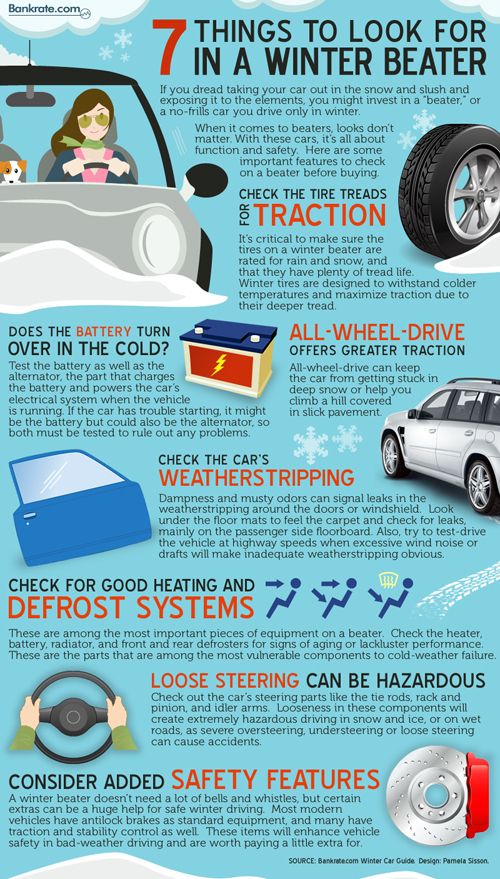 If you tend to drive when the roads are cold as hell but more or less clear and dry, then a performance winter tire is most likely best.
If you tend to drive when the roads are cold as hell but more or less clear and dry, then a performance winter tire is most likely best.
Studless tires are best for when winter is at its worst. These tires have maximum snow and ice traction and are made from a special type of winter compound that provides traction on whatever the texture of the road surface might be. They are designed to grip both the snow and the thin layer of water that usually accumulates in the tire’s footprint.
The colder it gets, the better they work relative to performance winters or all-seasons. Their compromise is that in milder weather, they’re not your best choice.
Performance winter tires are still designed to be used in icy and cold conditions, but they are ideal for clear roads and warmer days. They’re better in the wet and dry, plus they feel better to drive on. Moreover, they have a higher speed rating than their more extreme studless cousins. Performance winter tires won’t have the same bite as studless tires do in the snow, but if, say, you live in a city and don’t drive huge distances every day and still want a nice winter tire in case you get caught in a snow storm, then performance winters are probably your best option.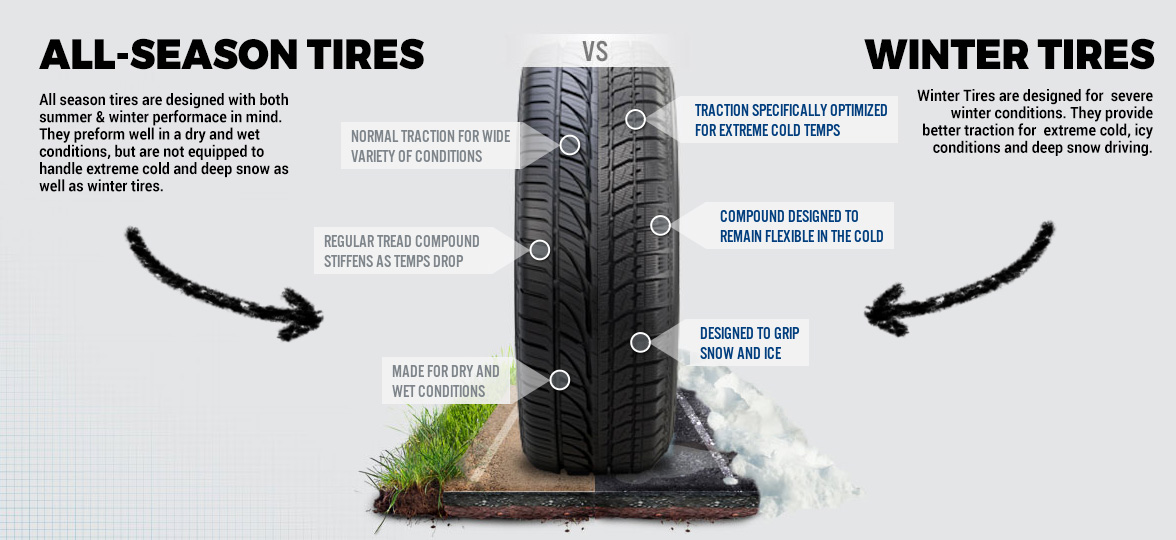
One last thing to look for is the Three-Peak Mountain Snowflake symbol on the sidewall of a winter tire, usually located closer to the rim edge. It looks like this:
The symbol is branded on tires that pass a standardized traction test. It used to be that only winter tires had this symbol, but now some all-seasons have them as well. Keep that in mind when tire shopping. Just because an all-season tire is branded, it still won’t perform as well as a branded winter tire in low-traction conditions.
The M+S symbol means that the tire was also designed to perform well in moderate winter conditions.
If you’re buying a new set of wheels and tires, you should check what your car was originally offered with from the factory to make sure you keep things consistent. Using the same tire size as the OEM is typically the best choice.
You don’t always have to do that, though. For example, if you have 18-inch wheels on your car, but the base model came with 17-inch wheels, you can definitely minus-size your wheels and tires because the car came from the factory designed to utilize the smaller size.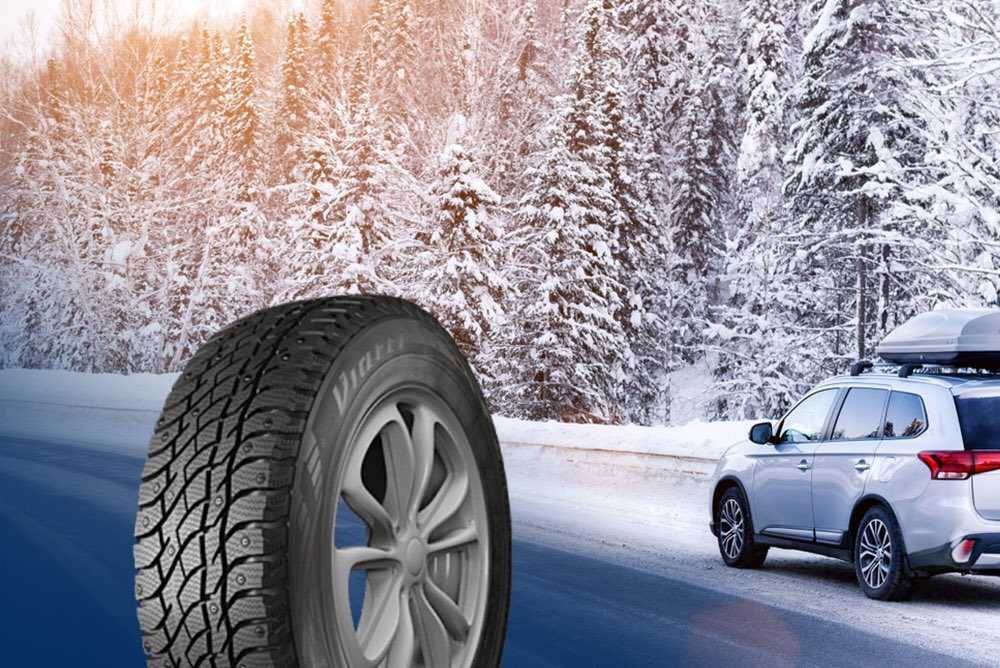 You’d probably save some money that way, which is nice.
You’d probably save some money that way, which is nice.
More importantly, driving through snow with narrower tires actually helps prevent you from getting stuck, Rogers pointed out. Narrower tires means there’s less snow to push through, so less resistance. “With wider tread, you’re more likely to start snow plowing or floating on top of the surface instead of pushing down and through,” as Tire Rack has previously explained. “This floating will result in loss of traction sooner than with a thinner or narrower option. A good way to picture this is imagine a pizza cutter slicing through a pizza.”
To determine what size tires to buy for your car, consult the placard in the door jam, usually located on the driver’s side.
One thing to keep in mind here is that you should keep the overall diameter of the wheel and tire together consistent with what the car first came with. Various aspects of the car are calibrated based on this diameter (traction control, speedometer, etc.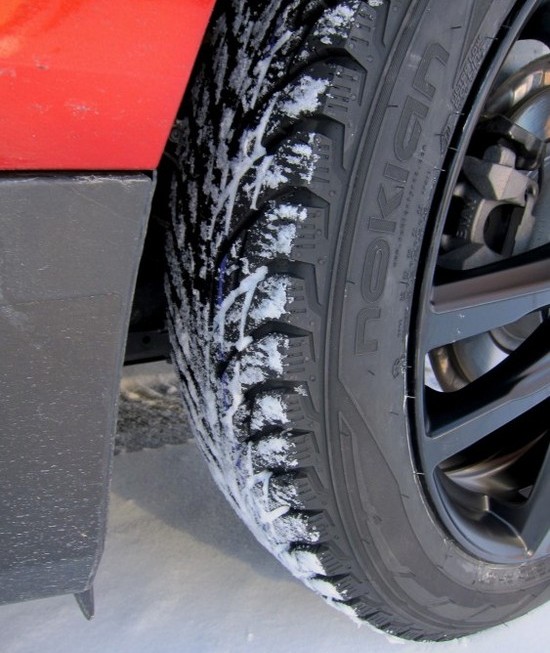 ), so messing with that without first properly doing research can be harmful.
), so messing with that without first properly doing research can be harmful.
Luckily, companies like Tire Rack have databases filled with different wheel and tires sizes from all kinds of different cars. Now, you can go onto the website, specify what kind of tire you are looking for, enter the make and model of your car and see what options have been tested to fit what you need.
Usually, the recommended tire pressure in PSI for winter tires is the same as for other tires. That handy little placard in the door jam will also tell you the advised tire pressure for your tires, but you can also consult your owner’s manual as well.
Sometimes, your manual will recommend you to go with a slightly higher tire pressure, as this can help with the handling and fight off fluctuations in air pressure.
Rogers explained that for every drop in 10 degrees in air temperature, the tires drop one PSI. On top of that, tires on average will lose one PSI for every month you drive your car.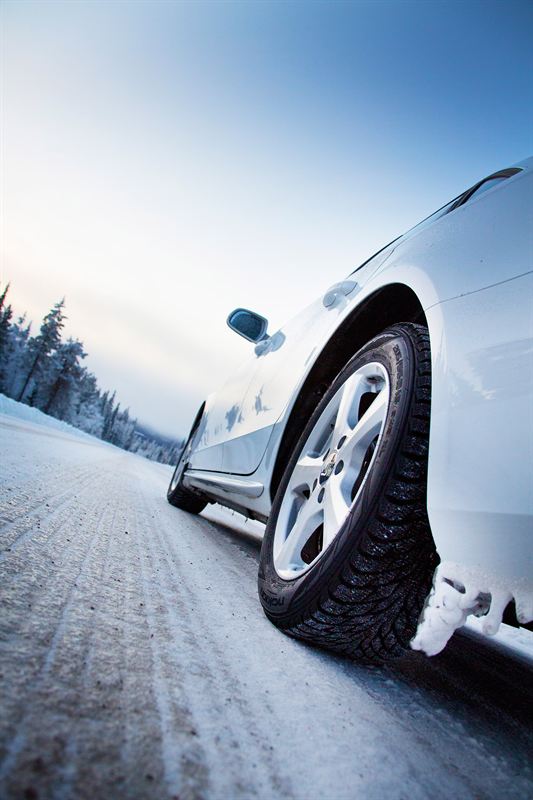 So, if you put your snow tires on your car on November when it was 50 degrees outside, a 10 degree day in January means that you’ve already lost about six PSI in your tires.
So, if you put your snow tires on your car on November when it was 50 degrees outside, a 10 degree day in January means that you’ve already lost about six PSI in your tires.
In a perfect world, we’d have a tire that would be grippy and sticky in the summer, great in the wet and an absolute monster in the snow and ice. As is the nature of things, you can’t have it all, which is why all-season aren’t particularly good at either thing.
“A tire that is designed to withstand the heat of the summer,” cautions Rogers, “cannot also be optimized to work well in the winter.”
Winter tires, though incredible in the snow and ice, admittedly aren’t as good in cold and dry braking conditions. In the dry, the all-seasons are as good or better. But! The reckoning comes with the wet conditions. That’s the trade off for top-tier snow and ice traction.
“The best winter tires do a good job at managing that trade off,” Rogers adds.
Rogers’ personal go-tos for studless tires are the Bridgestone Blizzak WS80s, though the Michelin Xi3s are a close second. They’re not quite as good on snow and ice, but they’re better in the wet and dry.
They’re not quite as good on snow and ice, but they’re better in the wet and dry.
For performance winters, he recommends the Pirelli Sottozero 3s and the Michelin Pilot Alpin PA4s.
Keep an eye out for the shops that will offer to modify a tire’s tread pattern and claim to increase its snow traction. Steve Carpino, Pirelli’s senior consultant of product design and development, warns that these alterations should not be done to any tires, ever. Tires have been designed by their manufacturer to perform the best from the factory. Tractionizing a tire for ice is a real thing, but it basically entails chopping up your tire. It has severe tradeoffs, like how long the tire lasts (or doesn’t.) If you’re going flat out on a rally stage or a frozen ice race, great. If you’re just driving around, your tire is going to die.
I get why people don’t always buy winter tires. It takes time and money to buy them in the first place and get them mounted each winter. Plus you have to store them when you aren’t using them. (This does does help increase the longevity of your other set of fair weather tires, it should be noted.) All in all, it’s not terribly convenient.
Plus you have to store them when you aren’t using them. (This does does help increase the longevity of your other set of fair weather tires, it should be noted.) All in all, it’s not terribly convenient.
But what you get back is peace of mind and safety. I just returned from driving an all-wheel drive Volvo on a set of all-seasons in the snow last weekend. It was fine in a straight line, but when any kind of sudden braking or turning happened, the car shuddered or just swung its tail out. Not good.
That kind of thing makes you feel nervous and timid whenever it snows. Of course, you should always be cautious when driving in adverse conditions, but the security that comes with having a good set of winter tires helps you free up some of your mind so you can drive even more safely. The difference in feel is something that you have to experience to believe, and you’ll kick yourself for not buying them sooner once you get your first set.
As with everything else you do for your car, you should research, research, research beforehand. Research the best tire, read reviews and look up tests. Certain OEMs have tire recommendations of their own, especially if they are like Porsche or Mercedes and offer high-performance models.
Research the best tire, read reviews and look up tests. Certain OEMs have tire recommendations of their own, especially if they are like Porsche or Mercedes and offer high-performance models.
I won’t BS you: It takes time, but it’ll be worth it.
www.adv.rbc.ru
www.adv.rbc.ru
www.adv.rbc.ru
Autonews
TV channel
Newspaper
Pro
Investments
+
New economy
Trends
Real estate
Sport
Style
National projects
City
Crypto
Debating Club
Research
Credit ratings
Franchises
Conferences
Special projects St. Petersburg
Petersburg
Conferences St. Petersburg
Special projects
Checking counterparties
Library
Podcasts
ESG index
Politics
Economy
Business
Technology and media
Finance
RBC CompanyRBC Life
www.adv.rbc.ru
www.adv.rbc.ru
Read also
Already in a few weeks the European part of Russia will be covered by the “tinker's day”. Weather forecasters warn of the arrival of night frosts and the first snowfall. For motorists, this means it's time to change the way you drive and prepare your car for winter. You need to start with the most important thing - choosing high-quality winter tires. And this also applies to those drivers who have recently bought a new car and have not yet driven it in winter, and those whose old set of tires has already noticeably worn out and needs to be updated.
For motorists, this means it's time to change the way you drive and prepare your car for winter. You need to start with the most important thing - choosing high-quality winter tires. And this also applies to those drivers who have recently bought a new car and have not yet driven it in winter, and those whose old set of tires has already noticeably worn out and needs to be updated.
Tires should be chosen responsibly. High-quality winter tires are confidence, comfort and, most importantly, safety. On slippery and unpredictable surfaces, every meter of braking distance is important, so it’s better to give preference to proven brands and look at the new season. On the example of new models from MICHELIN - X-Ice North 4 and X-Ice North 4 SUV - we will understand the nuances of changing tires.
www.adv.rbc.ru
Ice or snow falling at night is not the best signal to go to the tire shop. It is better for motorists to prepare for worsening weather conditions in advance, that is, on the day winter arrives, good winter tires should be installed on the car. In order not to miss the moment and do everything on time, you should now carefully monitor the air temperature.
In order not to miss the moment and do everything on time, you should now carefully monitor the air temperature.
Experts recommend going to the tire shop when the average daily air temperature drops to plus seven degrees Celsius or below. Winter tires, even in the absence of snow and ice, behave much better - they do not tan in the cold and provide the best grip on the road.
For example, the MICHELIN X-Ice North 4 and X-Ice North 4 SUV tires have a new tread pattern with wider sections. Thanks to this, the tire is stable not only on snow and ice, but also on dry and wet asphalt.
This is an eternal question that worries all Russian motorists. However, the largest tire manufacturers, including MICHELIN, recommend paying attention to studded tires. Only they, given the difficult Russian climate, can provide maximum driving confidence, regardless of the road surface. The Michelin company even calculated that today 77% of sales in Russia as a whole are accounted for by winter studded tires. As for the owners of crossovers and SUVs, more than 70% of them prefer studded tires.
As for the owners of crossovers and SUVs, more than 70% of them prefer studded tires.
The MICHELIN X-Ice North 4 and X-Ice North 4 SUV models use 250 and over 300 studs per tire, respectively. It is the spikes on slippery surfaces that provide the best grip on the surface, reducing the braking distance, preventing drifts and skids, and also helping the car to accelerate at the right time without unnecessary slipping.
Manufacturers are improving their models of studded tires every year, including reducing the noise level. Michelin has managed to achieve impressive results in acoustic comfort with the help of a special mathematical program. It was she who helped determine the optimal placement of the studs in such a way as to find the perfect balance between grip and noise level.
A few years ago, 250-300 studs in one tire meant a complete lack of acoustic comfort, but now everything has changed for the better. X-Ice North 4 and X-Ice North 4 SUV are good on any type of surface and do not irritate with excessive noise.
Leading brands are trying to develop their own unique stud design that will provide the best grip on slippery surfaces and last the longest. Michelin has a wealth of experience with the studs themselves - the company is a multiple WRC rally winner. Of course, it is impossible to use exactly the same studs on public roads as in racing, but the company's engineers adapted their developments as much as possible and achieved impressive results.
It is best not to try to fit tires higher or wider than what your car manufacturer recommends. There are no tricks here: use the same width and profile height as your summer tires. MICHELIN offers all popular tire sizes for most vehicles. What's more, the X-Ice North 4 SUV range includes tires designed specifically for crossovers and SUVs. Such a tire can be used even at extreme air temperatures.
Company news
www.adv.rbc.ru
www.adv.rbc.ru
Contents
Introduction
Why are winter tires needed?
How to choose the right winter tires by marking?
Choosing tires according to the tread pattern
Choosing tires by type
Studded
Friction
All season
Conclusion
It's getting cold.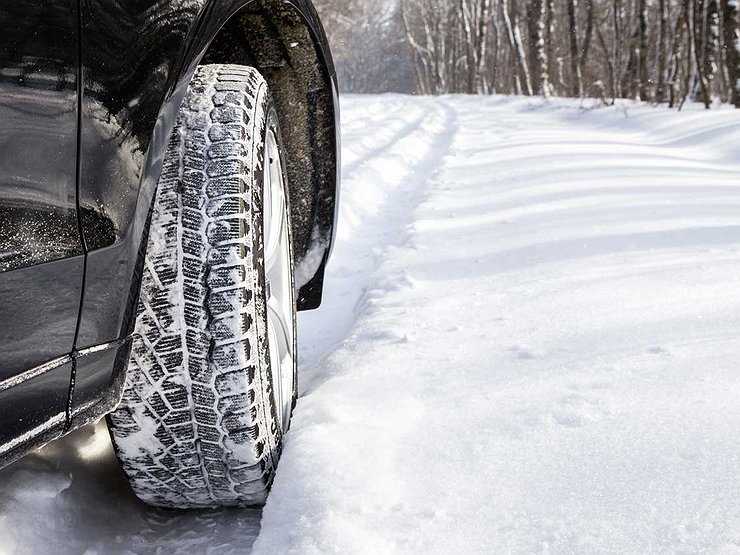 Now is the time to look for a new set of winter tires. And for many drivers, one question follows another: how to choose a winter tire from all this variety of brands? Is it worth it to spike or is it better to do without? To help our customers make a difficult choice, we have compiled this article, where we answered all the questions.
Now is the time to look for a new set of winter tires. And for many drivers, one question follows another: how to choose a winter tire from all this variety of brands? Is it worth it to spike or is it better to do without? To help our customers make a difficult choice, we have compiled this article, where we answered all the questions.
Ignorant “green” drivers are often interested in: “Is it necessary to change tires to winter ones at all? Is it possible to ride in the summer version in winter too? The answer is unequivocal - no, you can't. Even if the driver is not accustomed to reckless driving, riding on hard summer tires on icy or snowy roads will definitely lead to an accident. This type of tire is simply not designed for low temperatures and snow blockages. But winter tires are designed specifically for slippery frozen surfaces - be it packed snow or smooth ice. They are much softer than the summer version and are able to maintain elasticity with a strong minus.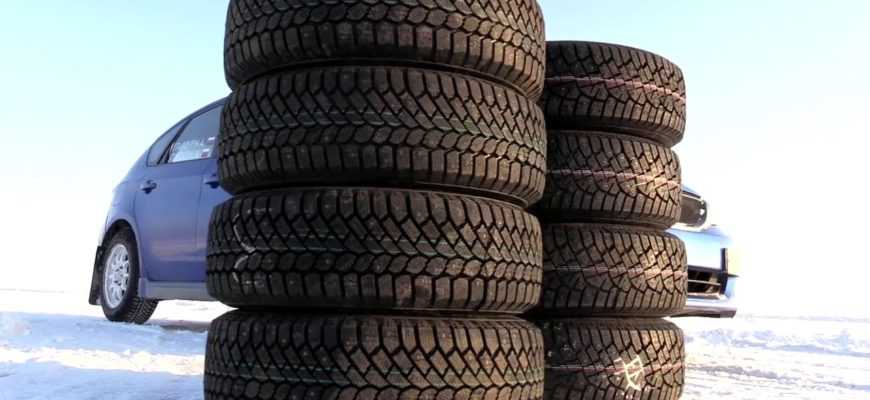
Several components give their special properties to a tire:
The tread of a good winter tire consists of large blocks and deep grooves between them. As the wheel spins, the whole system scoops up the snow and collects it in the recesses to create extra grip, and then throws everything out. Only winter tires can do this.
It is very easy to determine for which season car tires are intended. On the sidewall of the tire for winter conditions, there is a marking in the form of a snowflake against the backdrop of a triple mountain peak. In 2012, UN and EU experts officially adopted this sign as a guarantee that the rubber meets all safety criteria.
You can often hear that you only need to change wheels when there is a lot of snow on the roads or everything is covered with ice, and if the winter turned out to be snowless, then you can get by with a good kit for the summer. This is a very common misconception: when the temperature drops below zero degrees, the tire on the car for the summer will most likely turn into a "piece of wood" and will not be able to cling to the road surface.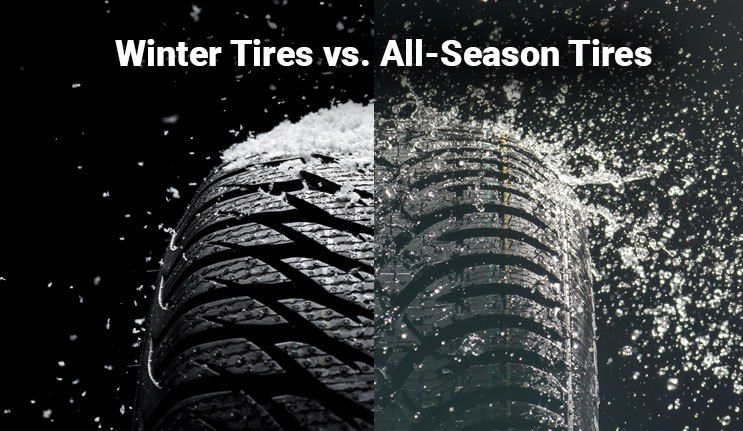 Good winter tires are created not only for snowy and icy highways, but also for trips on wet and dry asphalt.
Good winter tires are created not only for snowy and icy highways, but also for trips on wet and dry asphalt.
You should change tires on your car not under the howl of a blizzard, but when the thermometer reads +7-+5, and warming is definitely not expected. As a rule, this is October-November.
And do not even think about buying tires from different manufacturers! Each model has its own road control properties, and breaking the concept is bound to affect driving.
Here are some tips on how to choose winter tires and not make mistakes.
The first step is to choose the size - look for it in the car manual. As a rule, it is exactly the same as the summer version, so just look at the sidewall of one of the wheels of the car and find the numbers P225 / 45 R18 9 there5S where:
225 is the width of the tire from one side to the other, expressed in millimeters.
45 - percentage of the sides between the height of the side wall and the width of the tread.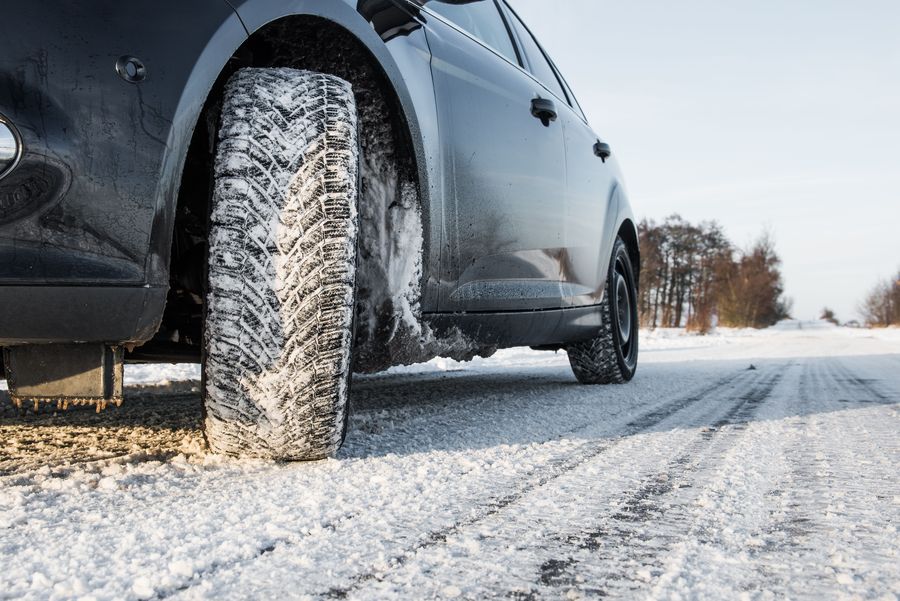
R18 is the tire diameter in inches.
95 - index of maximum load without loss of traction (the range for passenger cars can be presented from 75 to 105).
S is the maximum speed at the recommended load capacity (S corresponds approximately to 180 km/h). The speed range is represented by letters from J (100 km/h) to ZR (more than 240 km/h).
Exactly the same parameters should be on the kit for winter conditions. If everything fits, be sure that the choice is correct, and the rubber will sit on the seat like a glove. However, some owners prefer to choose smaller winter tires and save money. The fact is that cars can fit smaller tires, it all depends on the model.
Also, some drivers put tires with high values of the speed index and maximum load. Installing tires that are able to withstand more weight and speed is quite acceptable to increase the service life, but their performance deteriorates.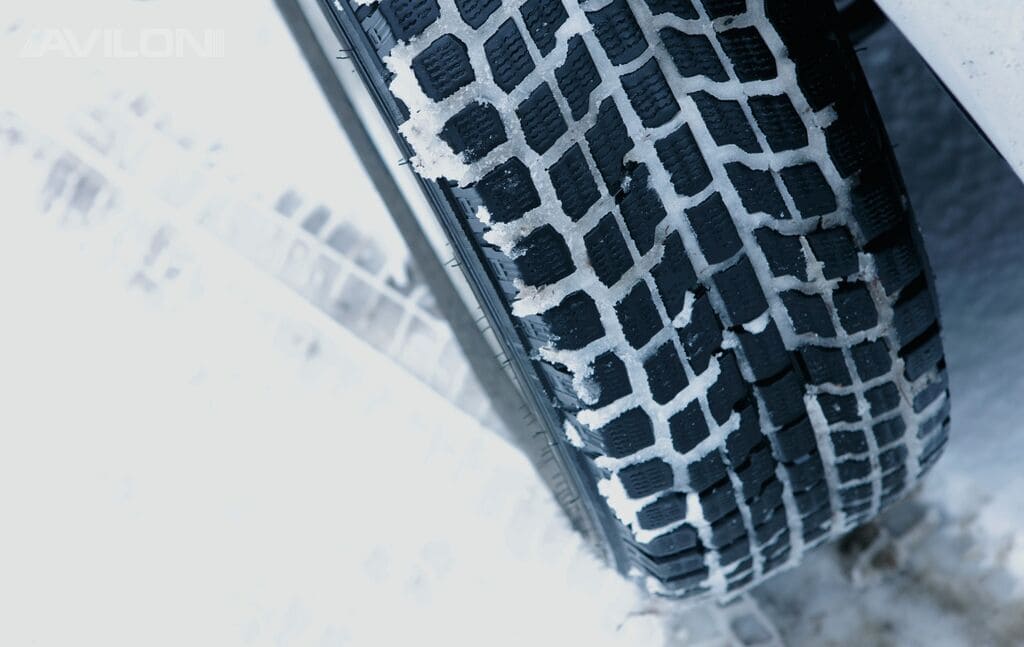 It is hardly the right decision to buy winter tires, where the load index is lower: excessive weight will provoke uneven wear, and the tire will not last long.
It is hardly the right decision to buy winter tires, where the load index is lower: excessive weight will provoke uneven wear, and the tire will not last long.
On the sidewall there is more additional information about the product:
The "alpine symbol" in the shape of a snowflake (which we talked about above) reports that this car tire meets the minimum standards for operation in winter conditions.
M+S is an all-weather tire that can be used in mild climates.
DOT or E - the tire meets the requirements of the US Department of Transportation (DOT), or it has passed the EU tests (E).
Direction and arrow - for models that can only rotate in a certain direction.
The topic of tire labeling is a big one, and we don't need to cover it all in this article. We will give one more piece of advice: check the expiration date of winter tires - the year of manufacture can also be found on the sidewall.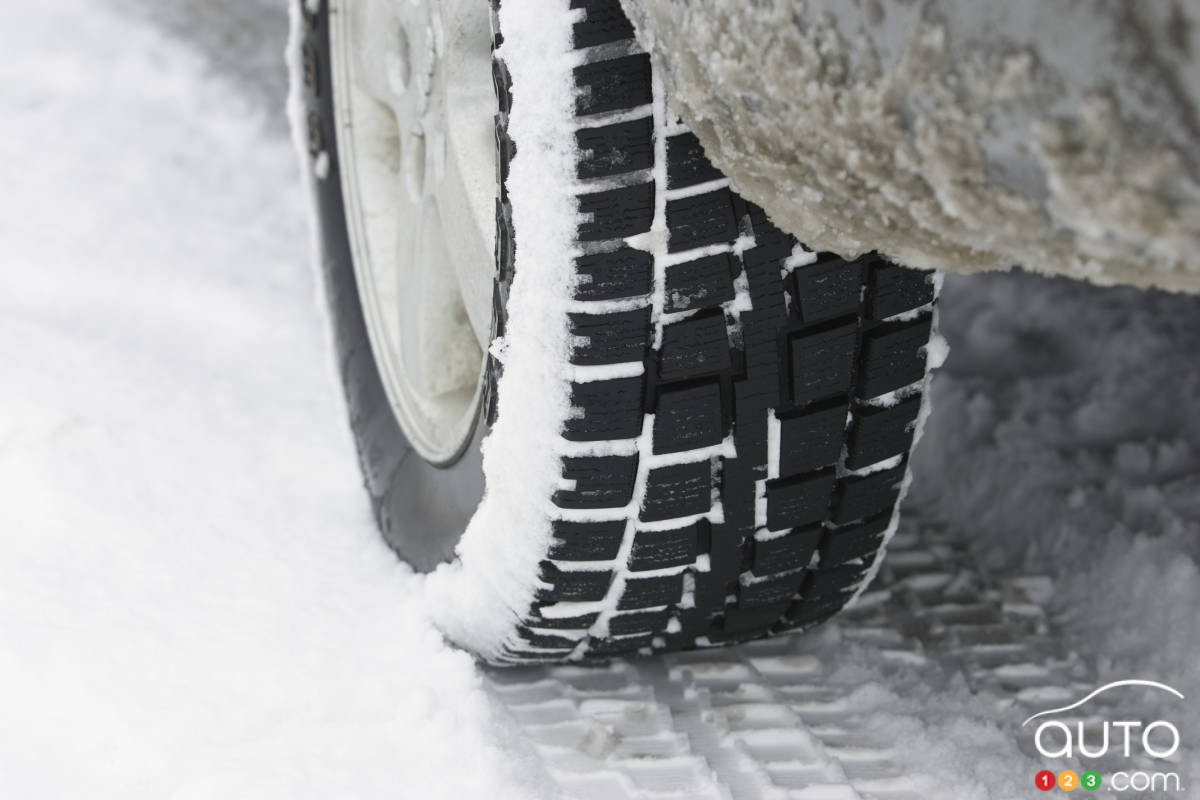 Tires are legally new for five years if properly kept in stock. After 7 years of storage, even in the most ideal conditions, the composition begins to lose its beneficial properties.
Tires are legally new for five years if properly kept in stock. After 7 years of storage, even in the most ideal conditions, the composition begins to lose its beneficial properties.
There are three types of winter tire design in total:
Directional symmetrical - budget and versatile for any coverage. The drainage system effectively removes dirt and water from the contact patch. On such tires there should be no problems with asphalt.
Non-directional symmetrical - the best self-cleaning of dirt and moisture and removes water. When driving, the tires emit very little hum and are comfortable to drive.
Non-directional asymmetric - perfectly holds the track and guarantees high-quality lateral stability of the car. This design is created, as a rule, for expensive models.
To easily choose winter tires, be aware that there are three varieties of it:
Each of them has its own advantages and disadvantages. The choice should be made based on what routes and at what temperature your car drives. We list the advantages and disadvantages of each type of winter tires.
The choice should be made based on what routes and at what temperature your car drives. We list the advantages and disadvantages of each type of winter tires.
Studded tires are designed for driving on icy or snowy roads. Such models are studded for harsh winter conditions, retain their properties in the cold and have a very short braking distance on snow and ice. The teeth with which the tread surface is seated penetrate the ice well and do not allow the car to succumb to slips and skids. There are two types of such spikes: metal or ceramic (the former are much more common). On average, about a hundred "carnations" can be counted on the surface. There are a few models that are produced with holes for studding - they drive them without a “thorn”, but they can be studded and then enjoy all the advantages of such rubber, not forgetting about the shortcomings.
Winter tire studding is especially effective on ice, on fresh snow and when climbing uphill, but it does not feel very good on dry pavement and especially at high speeds - the studs will interfere with tight contact with the track and lengthen the braking distance.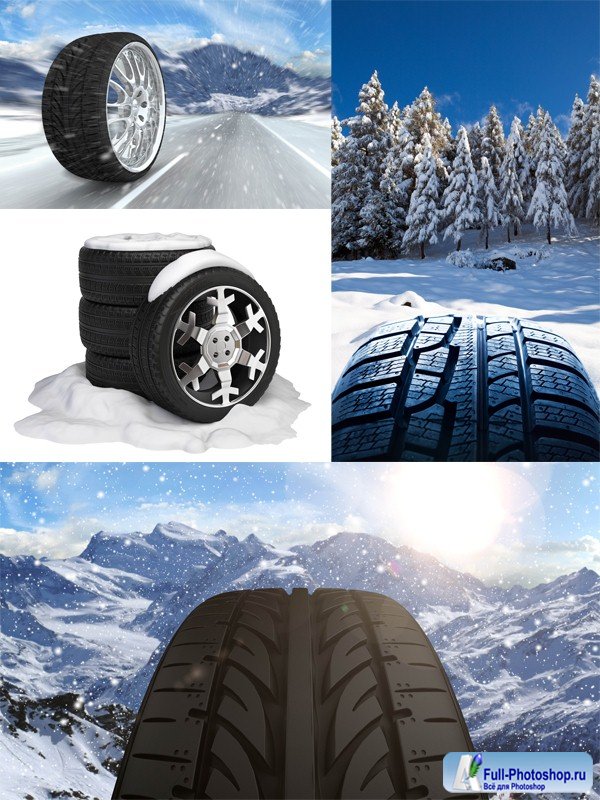 In loose snow or on a marshy primer, the spikes simply "dig" the wheels of the car. It is also inconvenient to drive fast because of the loud noise with which the “thorn” interacts with the road surface. The studs often fall out and the tire has to be additionally studded. The downside is their negative impact on asphalt - in some countries it is generally forbidden to stud tires. Winter tires with “studs” will have to be run in for the first 500-1000 km at a speed of no higher than 80 km / h and without sudden braking.
In loose snow or on a marshy primer, the spikes simply "dig" the wheels of the car. It is also inconvenient to drive fast because of the loud noise with which the “thorn” interacts with the road surface. The studs often fall out and the tire has to be additionally studded. The downside is their negative impact on asphalt - in some countries it is generally forbidden to stud tires. Winter tires with “studs” will have to be run in for the first 500-1000 km at a speed of no higher than 80 km / h and without sudden braking.
Spike the protector if you live in northern latitudes and rarely visit large cities.
Friction (Velcro tires) are divided into European and Scandinavian types for winter conditions. The former are good on snowy tracks, the latter are more relevant in big cities where snow is regularly cleared and where the repaired road surface prevails. It is not recommended to ride them in severe frosts, because they are intended for use in mild winters.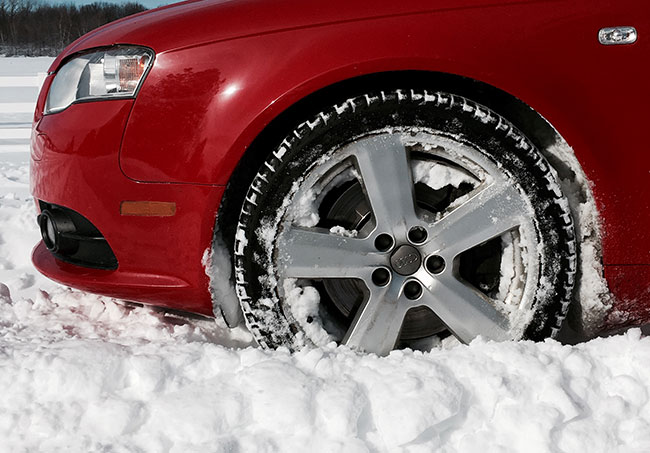
The surface of their tread does not stud, so the tire can only rely on a good compound, blocks and sipes, with which the rubber clings to the track. Frictions are almost helpless on ice, but feel good on packed snow and slush. On the pavement, they also cope much better than the models that were spiked.
As for the noise in the cabin, the Velcro is incredibly lower than the rubber with a thorn. In addition, they do not pose a strong threat to the integrity of the road surface. Another small feature: friction tires consumes fuel somewhat less.
Despite the loud name, all-season tires are good in temperate climate zones. This type is characterized by marking M + S (mud and snow). It means that the rubber is designed to move the car in mud and snow. But this is only a formality, because the climatic conditions in each country are different, and the tread is used for driving in moderate snow and slush. In Europe, it is quite possible to move on such tires, however, in the Russian winter, all-season tires will hold the frozen highway very poorly and brake extremely inefficiently.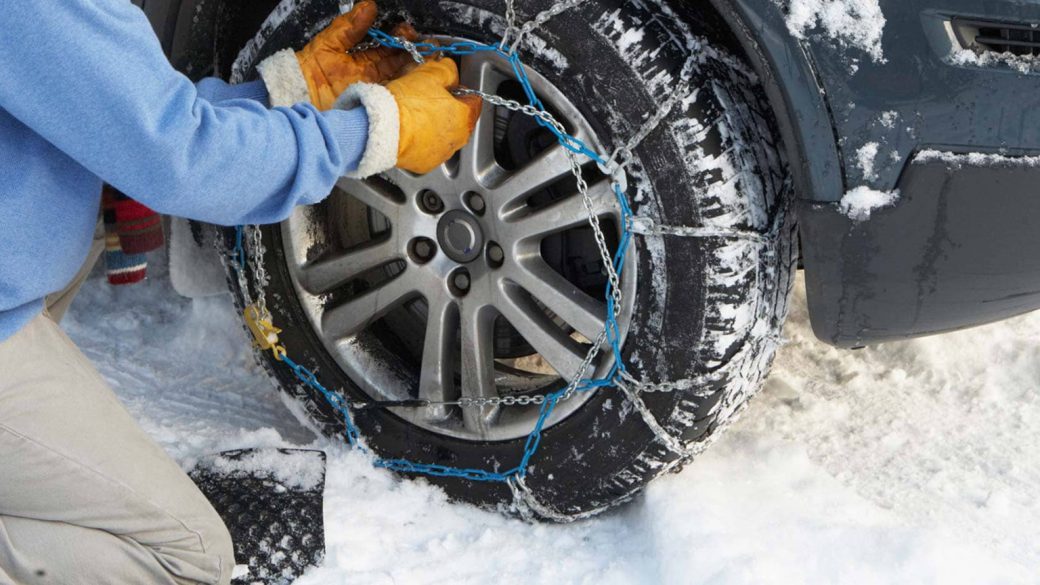
All-weather tires may suit car owners from the Southern Federal District, where winters are not as severe as in the north. The rest are allowed to wear it in spring, summer and autumn: when the thermometer is from +7 to +30 about C, the conditions for them are the best. All-season tires have one indisputable advantage: they are very wear-resistant, and if the weather conditions are not disturbed, all-season tires will serve their owner for a long time. In addition, they do not need to be spiked and worry that all the teeth will be lost along the way. However, they will still not be a good replacement for either winter or summer - handling, cornering and braking will have to be sacrificed.
We at BlackTyres have been professionally selecting tires for many years. Take Scandinavian friction shoes to your car if you live in the northern regions of the country and do not leave a large city. Or friction euros/all seasons if you live in the south. Studded tires are more suitable for residents of provincial cities and villages in northern latitudes.